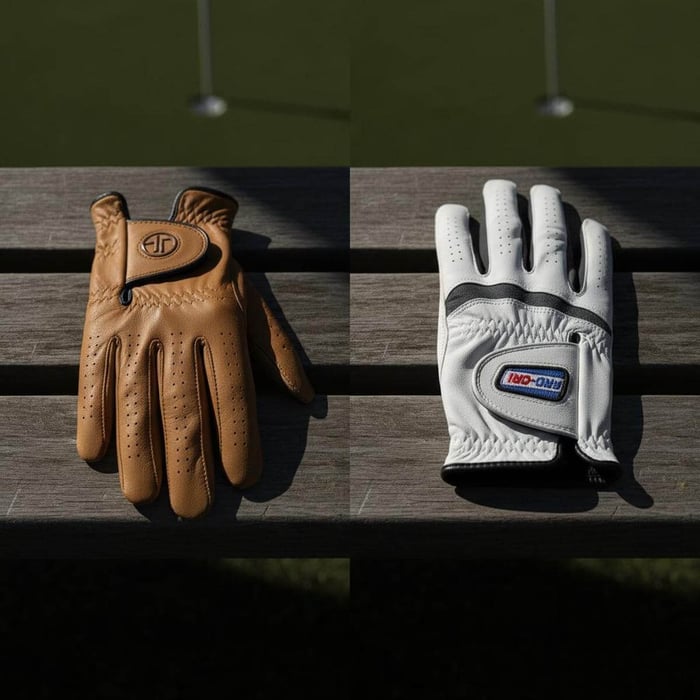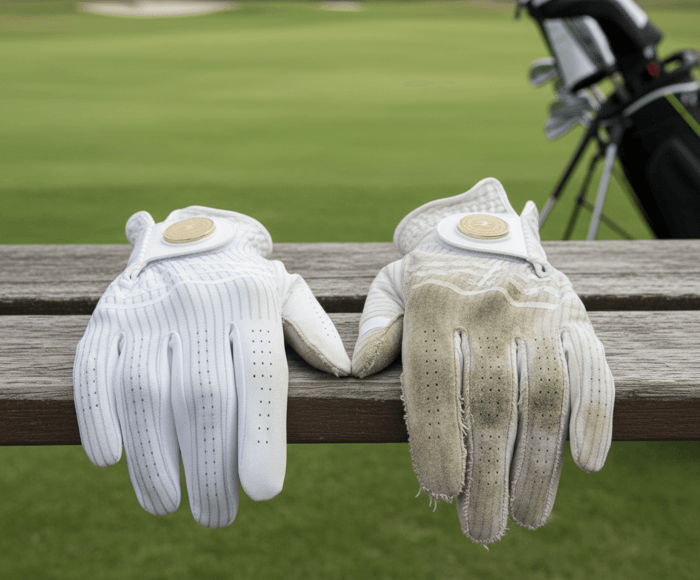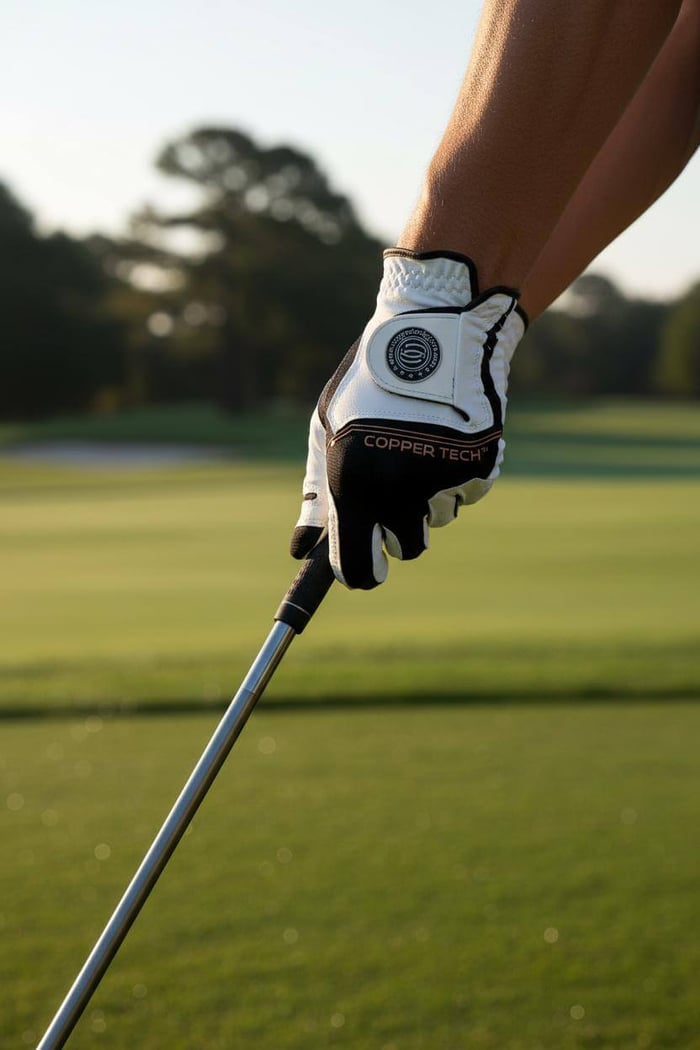Table of Contents
Your $30 leather glove might be the worst thing in your bag.
That's a bold statement, I know, especially when many of us have been told for years that only premium leather offers a true "tour-quality" feel. But what if that gold standard is actually holding your game back, leaving you with a sore hand, a slipping grip, and less confidence when you need it most?
You've likely felt the frustration. You buy a new glove, and it feels perfect on the first swing. But after a few round, or even just a few holes in the heat—that soft leather becomes slick and stiff. The grip you paid for is gone, and so is your confidence. You've tried everything: wiping it on your pants, using grip powders, and even swapping gloves mid-round, but it's never the same. You just want a glove that performs consistently, round after round, without falling apart.
This isn't just about a glove; it's about control, consistency, and the feeling that your equipment is working with you, not against you. So, what's the real difference between leather and synthetic, and is there a better way?
The Traditionalist’s Choice: Why Golfers Swear by Leather Gloves
For decades, leather golf gloves have been the top choice for serious golfers. The most premium options, made from Cabretta leather, are celebrated for their incredibly soft, supple feel. This material provides an unmatched tactile connection to the club, allowing you to feel every subtle movement.
The Feel: There's no denying the immediate satisfaction of slipping on a high-quality leather glove. It molds to your hand, feeling like a second skin.
The Grip: In dry conditions, leather provides a natural, tacky grip that gives you confidence over the ball.
However, this classic choice has some serious drawbacks. Leather is a natural material, which means it reacts to moisture. A hot, humid day or a little rain can make it slick, compromising your grip. And for many golfers, the lack of durability is a major pain point—it's not uncommon for a leather glove to tear after only a handful of rounds.
The Modern Performer: The Rise of Synthetic Golf Gloves
As golf technology has evolved, so have synthetic materials. Synthetic golf gloves, often made from fabrics like polyurethane or microfiber, have become a popular alternative, directly addressing leather's biggest weaknesses.
Durability: Synthetics are far more resilient. They stand up to wear and tear, meaning a single glove can last for many more rounds.
All-Weather Performance: These gloves excel in wet or humid conditions. They wick away moisture, preventing your hand from slipping and maintaining a consistent grip regardless of the weather.
Cost-Effectiveness: Generally, synthetic gloves are more affordable, making them a great option for golfers who play frequently and want a consistent, long-lasting product.
While synthetics are fantastic for durability and all-weather play, some golfers feel they lack the premium, thin-to-the-touch feel of leather. This has left golfers with a tough choice: durability and all-weather performance, or that coveted tactile feel?


.jpg)


